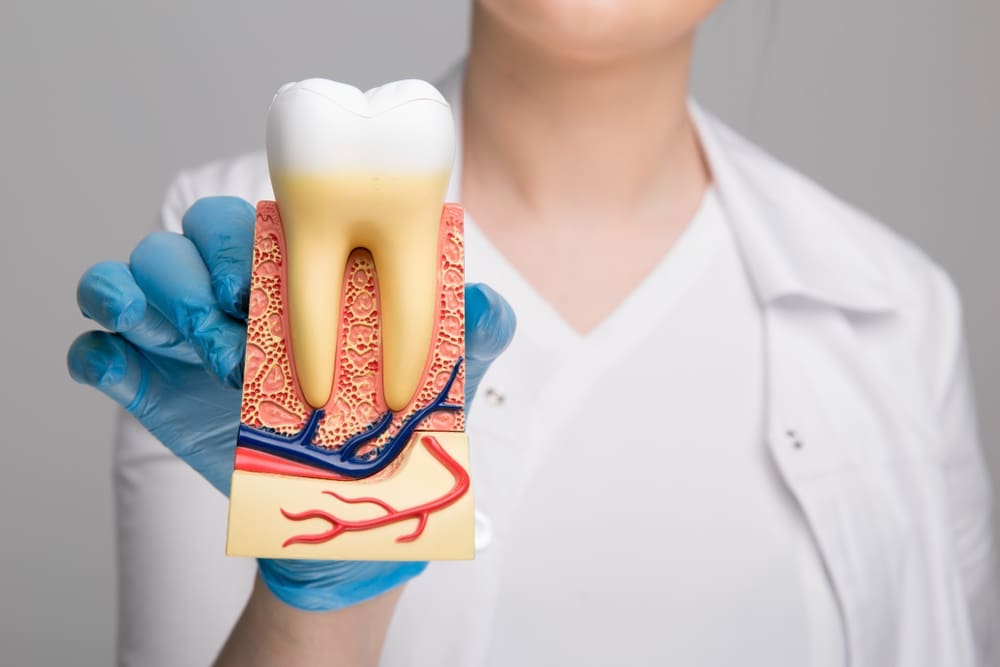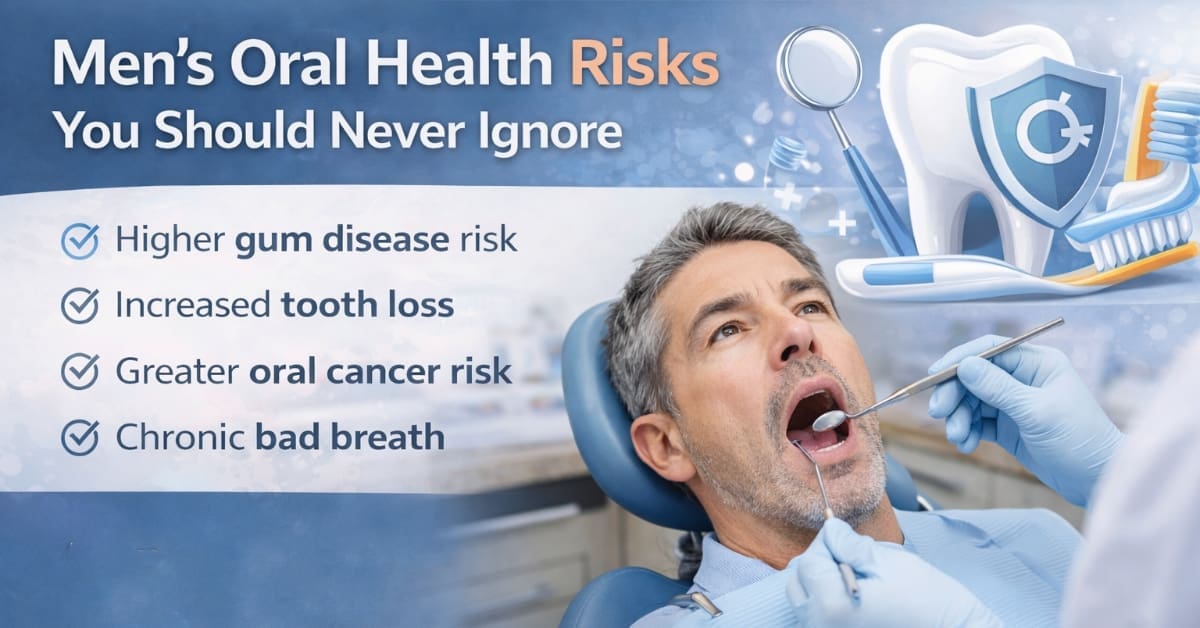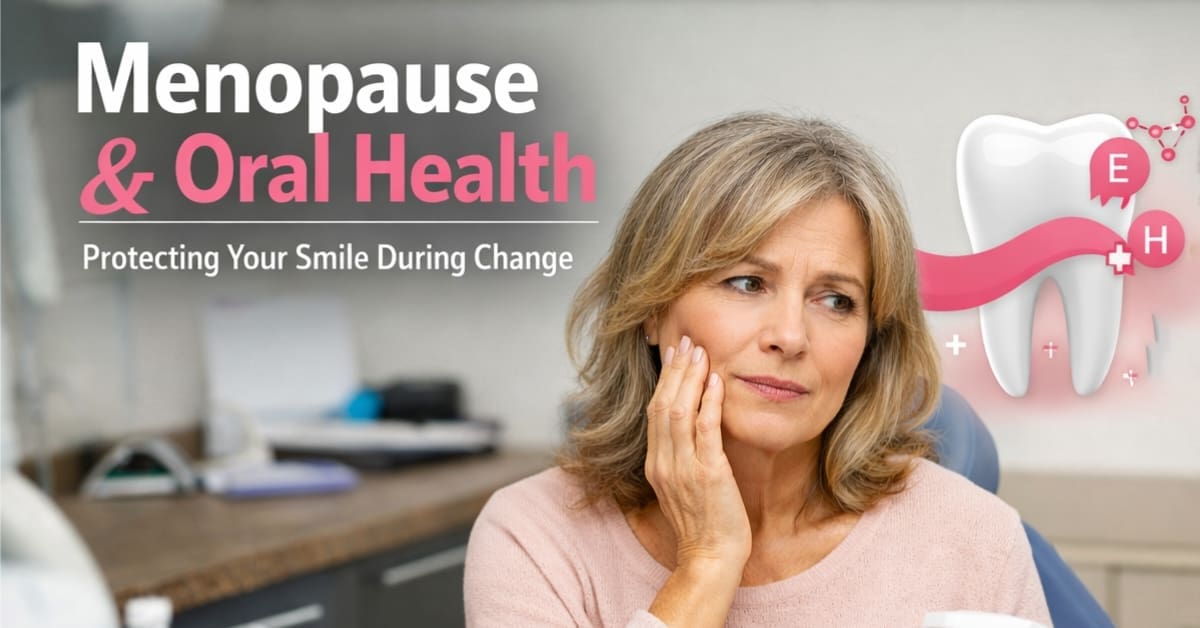Gum disease, or periodontal disease, is a prevalent condition that impacts the tissues encompassing and supporting teeth. Neglecting gum disease can result in tooth loss and other associated health issues. This guide provides an overview of the different types of gum disease, symptoms to look out for, and treatment options available.
Types of Gum Disease

Gingivitis
Gingivitis represents the initial and least severe stage of gum disease, originating from the accumulation of plaque—a sticky film containing bacteria—on the teeth. The toxins from plaque irritate the gums, causing them to become inflamed, red, and swollen. Indications of gingivitis encompass gums that bleed during brushing or flossing. With proper dental hygiene, gingivitis can be reversed.
Periodontitis
Periodontitis represents a more progressed phase of gum disease, in which…inflammation has spread to the tissues and bone surrounding teeth. As the deep gum tissues separate from the teeth, pockets become infected. Not treated can destroy the bone and soft tissue, leading to tooth loss. Symptoms include gum recession, bad breath, and loose or shifting teeth.
Aggressive Periodontitis
This severe form of gum disease results in rapid attachment and bone loss around the teeth. It can develop in patients who appear to have healthy gums. Symptoms include painful and bleeding gums, receding gums, and loose teeth. Getting evaluated promptly is vital to save teeth.
Necrotizing Periodontal Disease
This refers to inflammatory conditions that cause necrosis (death) of gum tissues, including gingival tissues, periodontal ligament, and alveolar bone. Symptoms include red, swollen, bleeding gums, bad breath, and rapid tooth loss. Treatment focuses on controlling the infection.
Gum Disease Symptoms
- Gums that are red, inflamed, and prone to bleeding during brushing or flossing.
- Gums that have pulled away from the teeth, exposing root surfaces
- Continual bad breath or an unpleasant taste in the mouth.
- Loose or shifting teeth
- Changes in the fit of partial dentures
- Receding gums
- Pus between teeth and gums
- Painful chewing
- Tooth loss
Risk Factors
- Poor oral hygiene
- Smoking or tobacco use
- Crooked teeth that are hard to clean
- Pregnancy/hormonal changes
- Grinding or clenching teeth
- Diabetes and other conditions that affect immunity
- Medications such as oral contraceptives, steroids, calcium channel blockers
- Stress
- Genetic susceptibility
Gum Disease Complications
- Tooth loss – this is a significant consequence of periodontitis
- Difficulty eating and speaking
- Jawbone deterioration
- Tooth drift and bite issues
- Receding gums affect smile aesthetics
- Increased risk of heart disease and stroke
- Higher risk of respiratory disease
- Poorly controlled diabetes
- Preterm births or low birth weight babies
Gum Disease Diagnosis
A dentist diagnoses gum disease after reviewing medical and dental history and performing a clinical exam. Signs of gum disease include:
- Visible plaque, tartar buildup
- Swollen, red, bleeding gums
- Gum recession
- Periodontal pocket formation
- Loose or mobile teeth
- Changes to tooth alignment
- Pus discharge

The dentist may use advanced techniques to evaluate the condition of gums and teeth, such as:
- Periodontal probing – measuring pocket depth
- Dental x-rays – to check bone levels
- Advanced imaging – 3D cone beam CT
Gum Disease Treatment
Gum disease treatment aims to manage infection and halt disease progression. Options include:
Regular Professional Cleanings
Dentists recommend cleanings every 3-6 months to control plaque and tartar above and below the gums. Thorough plaque removal reduces inflammation and pockets.
Scaling and Root Planing
This thorough cleaning entails meticulously removing hardened plaque and tartar from the root surfaces and pockets. Local anesthesia is often used for comfort.
Medications
Antibiotics, oral rinses containing chlorhexidine or hydrogen peroxide, and antibacterial gels in pockets help control bacteria. Anti-inflammatory pain relief medication is sometimes prescribed as well.
Gum Surgery
Surgical procedures like flap surgery, bone and tissue grafts, and guided tissue regeneration can be done to remove diseased gum tissue and regenerate bone in advanced cases. This helps reduce pockets and reinstate healthy tissues.
Laser Therapy
Laser treatments remove diseased gum tissue and aid healing and regrowth. No stitches are required. Treatment is less uncomfortable than conventional surgery.
Recommendations after Treatment
- Brush twice daily with antibacterial toothpaste
- Floss thoroughly once daily
- Use a medicated mouth rinse if prescribed
- Quit smoking for gum health and healing
- Follow up regularly for professional cleanings and evaluation
Practicing excellent oral hygiene and routine dental cleanings can help prevent gum disease or reduce its severity. If you observe any indications of gum disease, schedule an appointment promptly.
Dr. Paul Feldmen at Suburban Essex Dental provides both general and advanced gum disease treatment to help patients restore healthy gums and retain their natural teeth for life. Contact our West Orange, NJ office today.





